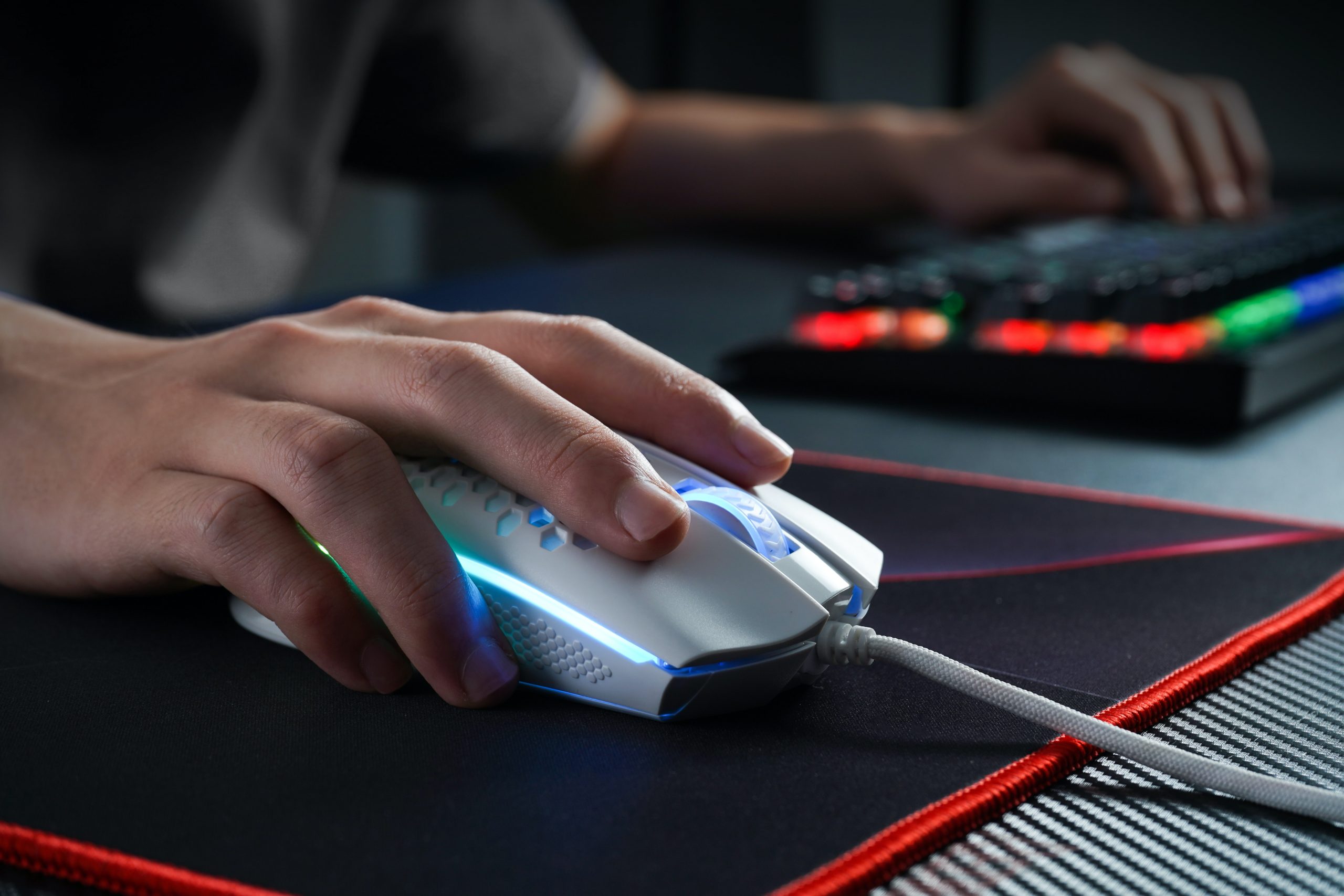What is a Trackball?

A trackball is a specific style of computer mouse that allows the user to keep their hand and arm in one place while manipulating a ball that moves the pointer on the screen. The computer mouse is a critical element to any PC setup in the home or office. The mouse provides the user with a way to move the pointer on the computer screen to the desired location, as well as the means to select an object. Used in all applications, from office software to gaming to web browsing, mouse comfort and ease of use are paramount.
The traditional computer mouse is a “point and click” tool, where the user physically moves the mouse across a mouse pad, desk, or another surface with the left or right hand until the pointer (or cursor) is in the correct position on the screen. Once there, the user clicks the right or left button to select the location and place the cursor. This type of navigation requires movement of the arm and wrist, and the location of the mouse assembly is variable.
The trackball mouse performs the same functions as the original-style mouse, but instead of moving the entire mouse to position the cursor, a small, solid ball is positioned to the left of the center or directly on top of the mouse, which is used to navigate the cursor on the screen. Using this style of the mouse allows the PC user to roll the ball with their thumb (or fingers or palm) and move the cursor to the desired location without moving the entire set. This reduces the arm and wrist movement previously required to maneuver the original-style mouse and saves the user from having to frequently reposition the mouse.
In addition to the reduced need to move your arm while manipulating the mouse, the thumb-controlled trackball offers greater precision in placing the cursor at the anticipated location. Unlike some conventional desktop mouse tools, it scrolls smoothly and doesn’t “jump” or stick to your mouse pad or desktop surface. Great for use when arm movement is restricted, the trackball doesn’t need a mouse pad or smooth surface underneath to work efficiently, as it doesn’t rely on contact with anything other than the user moving the ball.
Although it has not been shown to prevent computer-related injuries such as repetitive strain injuries, users with physical limitations may find this style of a mouse a better option than the conventional point-and-click tool. Before choosing a computer mouse, users should consider which applications are used most often, duration of use, space limitations, and physical limitations. To compare brands and models of conventional and trackball versions, the user should consult their local computer store or search online.
What is a finger mouse?
A finger mouse is a small computer mouse that is worn on the user’s finger. Most designs consist of an optical sensor light, two mouse buttons, a mouse wheel, and an adjustable finger strap. This compact mouse works on any surface, making it ideal for mobile computing. Both wired and wireless versions are commercially available, although a Universal Serial Bus (USB) port is required to connect either to a computer.
The main appeal of a finger mouse lies in its portability. A typical finger mouse is about one-third the size of a normal handheld computer mouse. Since the mouse works through an optical sensor, movement tracking is possible on any surface; No mouse pads or other similar surfaces are needed. This allows users to navigate with the mouse despite limited available space, as is often the case during travel situations. In addition, a finger mouse usually weighs between a quarter and a third of the weight of a conventional mouse, which makes it easy to transport.
The operation of a finger mouse begins by plugging its connector into one of the USB ports on the computer. Most manufacturers make their devices plug-and-play, which means that the software drivers the mouse needs to work are automatically installed on the computer when the device is plugged in. In the case of a wireless mouse, the device must be charged before use. The mouse is usually worn on the middle or index finger. The thumb is used to click both mouse buttons and to manipulate the mouse wheel.
Then the user’s finger should be placed vertically on the work surface. This allows the mouse’s optical sensor to track your finger movement. If the device is working properly, the computer’s cursor should accurately follow the movement of the user’s finger.
Opinions about fingered mice have been mixed. People who prefer the finger mouse say that its design relieves hand strain by minimizing the number of movements required to use the computer. Others praise technology, saying it brings computers us one step closer to being more interactive with natural human movement. Less practical reviews highlight the aesthetics of the device, favoring the mouse for its unique appearance.
Negative reviews of finger mice often emphasize their unconventionality. Many users complain that it takes getting used to the vertical orientation of the fingers, as well as the method of clicking. Reviewers also raise the issue of mouse size; Although smaller than conventional mice, a finger mouse feels relatively large when mounted on your finger and can often get in the way while typing. The mouse button orientation also leaves little choice for left-handed computer users.









